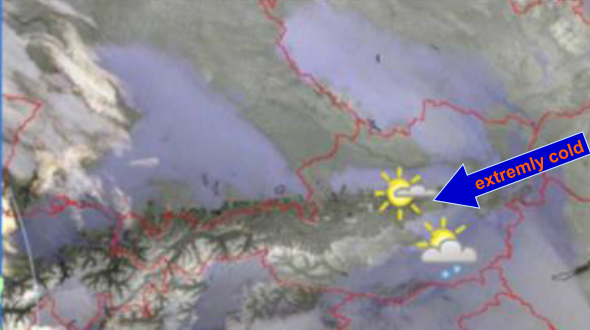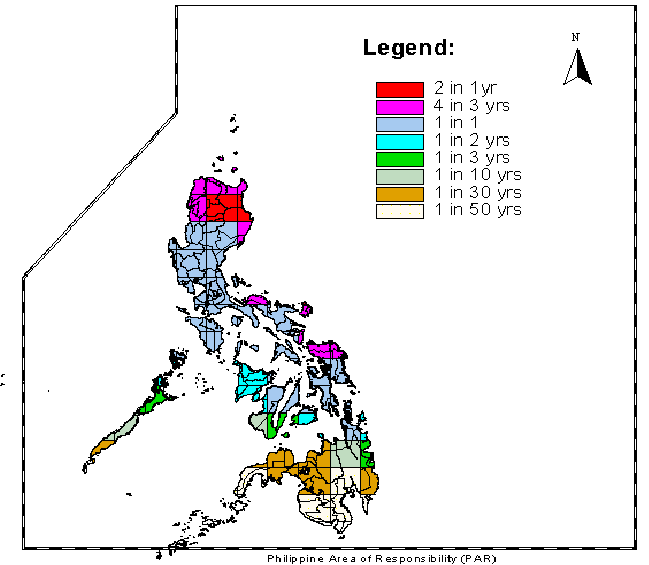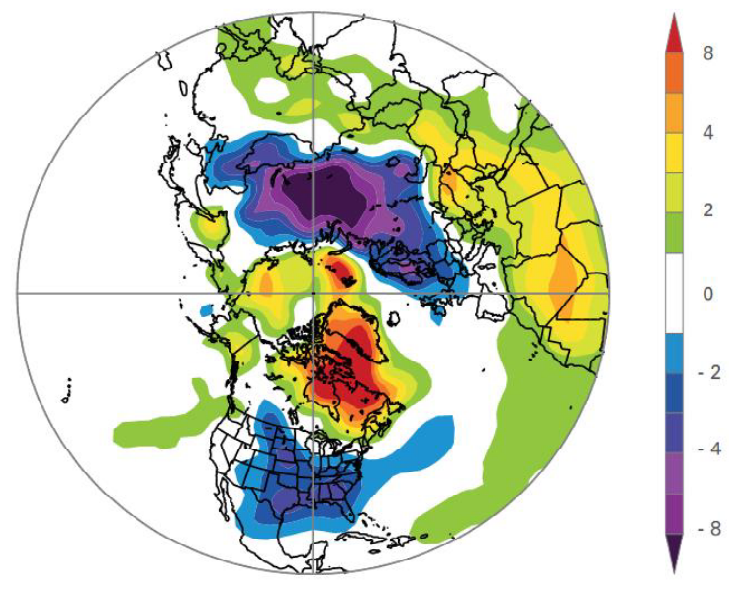Public weather service
Listed here are other resources related to Public weather service tag:
Note: click on an image to open the Resource
Gernot Zenkl presents the types of meteorological situation that can lead to critical avalanche situations in the eastern Alps.
Length: 45 minutes.
In this presentation one could see a short overview of the interesting and challenging work as an avalanche forecaster. Gernot Zenkl has shown which types of meteorological situation can lead to critical avalanche situations in the eastern Alps. Furthermore he explained the methods we use to inform and warn the people.
Christopher Perez gives an insight into Typhoons and their features.
Length: 35 minutes.
Christopher Perez, a weather forecaster of the Philippine Atmospheric, Geophysical, and Astronomical Services Administration (PAGASA) will gave an insight into Typhoons and their features. Specifically, he presented the chronology of events regarding Typhoon "Haiyan", one of the strongest tropical cyclones ever recorded, which devastated portions of Southeast Asia, particularly the Philippines, on November 8, 2013.
Helge Tuschy's talk offered an insight into the ingredients-based forecasting method, which assists an operational forecaster in preparing well ahead of an active thunderstorm day.
Length: 60 minutes.
This talk offered an insight into the ingredients-based forecasting method, which assists an operational forecaster in preparing well ahead of an active thunderstorm day. Mr. Tuschy also gave an overview about certain ingredients which could result in heavy rainfall and flash flooding (due to deep moist convection). He ended his talk with a short overview about ESTOFEX, the European Storm Forecast Experiment.
Ivan Guettler discusses climate extremes in the context of observed climate change.
Length: 30 minutes
Climate extremes were discussed in the context of the observed climate change and associated trends. The issue of attributing specific weather extreme to climate change was stressed. Several impacts on human activities was presented and estimated economical and human losses due to the weather and climate extremes were compared over different regions.
Two software packages for producing products for nowcasting purposes are SAFNWC/MSG (for geostationary satellites) and SAFNWC/PPS (for polar satellites) and the overview of these are given here.
This lesson, given by Maria Putsay from Hungarian Meteorological Service, is about derived products for nowcasting applications. Objectives of the Nowcasting SAF are development of Nowcasting products derived from MSG and Polar satellite systems, delivering of the SW Packages to users and User\'s support task through Help Desk. Two software packages for producing products for nowcasting purposes are SAFNWC/MSG (for geostationary satellites) and SAFNWC/PPS (for polar satellites) and the overview of these are given here. Products may be used in two ways; as an input to a program (e.g. to an objective meso-scale analysis or as intermediate product input to other products) and as an final image product for display at a forecaster\'s desk, or case studied. But the main aim is firs one mentioned. Also in this lecture applications of the NWC SAF products at the Hungarian Meteorological Service are discussed.
Presentation during the event week on Warning in October 2010.
Presentation by Michael Staudinger talks about the EMMA project and the meteoalarm website that integrates all important severe weather information originating from the official National Public Weather Services across a large number of European countries. The warning information is presented consistently to ensure coherent interpretation as widely as possible throughout Europe.
Wecast of the SMHI online workshop on technical aspects of the PPS v2014 software package.
The EUMETSAT SAF to support Nowcasting (NWCSAF) develops two software packages, one for geostationary imagery and one for polar satellite imagery. Both packages retrieve cloud and other parameters relevant for nowcasting and other applications relying on cloud detection. For more information see www.nwcsaf.org
The Polar Platform System (PPS) software package retrieves information on clouds and precipitation from NOAA satellites, MetOp and S-NPP. The recent release of PPS v2014 features also a number of technical updates affecting installation of PPS and interfacing to your environment and applications.
The workshop is addressed to users of PPS wanting to update their application, but also to prospective new users.
The NWCSAF kindly invites you to participate to a two hour online training workshop on the installation, use and operation of the new PPS v2014 software. We plan to have appoximately four half-hour slots around the following subjects:
* Installation
* New output format
* Operating PPS via the main script "RunAllParallel.py"
* Setup PPS in a real-time environment (no Task Manager in v2014)
Presentations (PDF):
PPS v2014 Engineering Introduction
PPS v2014 Binary Distribuitions
PPS v2014 Running in Real-time
Mahmood Al-Khayari gives an overview of typical weather situations in the Sultanate of Oman.
Length: 30 min
Author: Mahmood Al-Khayari
Mahmood Al-Khayari graduated at Saint Louis University (Missouri State), USA, with BS in meteorology in 2003. He is also holding MS in an engineering field from Sultan Qaboos University. Mahmood Al-Khayari works at Oman Met Service since Feb 2004 until now as meteorologist specialized in forecasting. He has done different kinds of forecasting: General, Aviation and Marine. Also he worked as a lecturer during this period in many courses such as: Met Technician course, aviation courses for Royal Force courses, marine courses for Oman Royal Navy, and many others. Mahmood Al-Khayari was recently selected to take care of the chief's duties of Remote sensing and research section.
Ok Hee Kim holds the weather briefing for the South Korean region. Her topics are: Asian Dust, Typhoons and typical weather phenomena in East Asia.
Length: 50 min
Author: Ok Hee Kim
Ok Hee received her BSc in Astronomy at the Chungbuk National University at Chungchungbukdo the province of South Korea (1992), and MSc in Meteorology from the Seoul National University in Seoul South Korea (2004). She is preparing for the PhD. Her areas of interest include severe weather, lake-effect snow, Asian dust, fog and applications of satellite imagery to weather forecasting, particularly on the mesoscale. She worked at weather forecasting division as assistant for weather forecaster for 3 years from 1992 and satellite image analyst 3 years from 1996. She has been a research associate at NMSC (National Meteorological Satellite Center) KMA (Korea Meteorological Administration) since 2006. She is currently working as a meteorological satellite image trainer and analyzer of COMS (Communication Ocean Meteorological Satellite) image for KMA's weather forecaster in NMSC. Presently, she is trying to develop Conceptual Models which are applicated in East Asia after training SATREP in ZAMG.
Vesa Nietosvaara and Larisa Nikitina give a weather briefing for the European region, Larisa focusses on the preparations for the 2014 Olympic Games in Sochi.
Length: 55 min
Author: Vesa Nietosvaara, Larisa Nikitina
Vesa Nietosvaara has worked as an operational weather forecaster for twenty years in 1988-2008. Since 1998 Vesa has been working within several training projects and created learning resources for operational meteorologists. Particularly, he is interested in satellite image interpretation and conceptual models for weather diagnosis. Most of his career Vesa has done at the Finnish Meteorological Institute, but since 2012 he works as a Training Officer at EUMETSAT. He assists the EUMeTrain monthly weather briefing team and regularly participates or lead the European online weather briefings (ePort weather briefings).
Larisa (Lara) Nikitina has been working as aviation weather forecaster in Rostov aviation center (Rostov-on-Don, south Russia) since 1985 after training as a weather forecaster in Russian State Hydrometeorological University (RSHU). And since 2010 she became the weather forecaster for Sochi 2014 Winter Olympics. Her special interests are the satellite meteorology applications for nowcasting and distance learning.
Diamantino Henriques gives a weather briefing for the Azores and looks back to the heavy rain event on 13th and 14th March 2013.
Length: 30 min
Author: Diamantino Henriques
Diamantino Henriques, received his degree in Atmospheric Physics at the University of Aveiro (1986) and his MS in Meteorology from the University of Lisboa (1996). From 1987 to 2003 he worked in Lisbon as meteorologist on atmospheric ozone and UV radiation issues. He has represented Portugal on several international meetings related with atmospheric composition and has participated in several projects and programs related with atmospheric ozone (GAW), atmospheric pollutants transport (EMEP) and UV radiation (EDUCE). In 2003 he moves to the Azores and worked at Ponta Delgada Airport as a senior meteorologist and forecaster. Later in 2008 he was nominated Head of the Regional Delegation of the Portuguese Institute of Meteorology (IM) in the Azores. Currently, he is the Head of the Azores Regional Delegation of the Portuguese Sea and Atmosphere Institute (IPMA, former IM) that includes the weather forecast service for the Azores.
Bodo Zeschke gives a comprehensive overview of the technical facilities available at the Australian Bureau of Meteorology followed by a weather briefing and a short lecture on shallow cold fronts.
Length: 50 min
Author: Bodo Zeschke
Bodo Zeschke received his BS in Physics at the University of New South Wales and MS in Meteorology at Monash University (2001). From 2001 to 2009 he worked as a forecaster at the Darwin Regional Forecasting Centre. During this time Bodo developed an interest in fog and low cloud nowcasting and forecasting for northern Australian regions. Since 2009 he has been engaged as a Lecturer to Australian and International postgraduate students studying for the Diploma of Meteorology at the Bureau of Meteorology Training Centre. Bodo has lectured in Tropical Meteorology, Satellite Meteorology and Weather Discussion training. Duties also include presenting lectures on related topics at World Meteorology Organisation courses and at the Bureau's annual Advanced Forecaster Workshop. He is the point of contact for the Australian VLab Centre of Excellence. Present topic of interest includes the integration of the satellite multichannel RGB products generated from MODIS imagery into Bureau forecast and training resources. This in preparation for the effective use of RGB products generated by the future Himawari 8 satellite.












